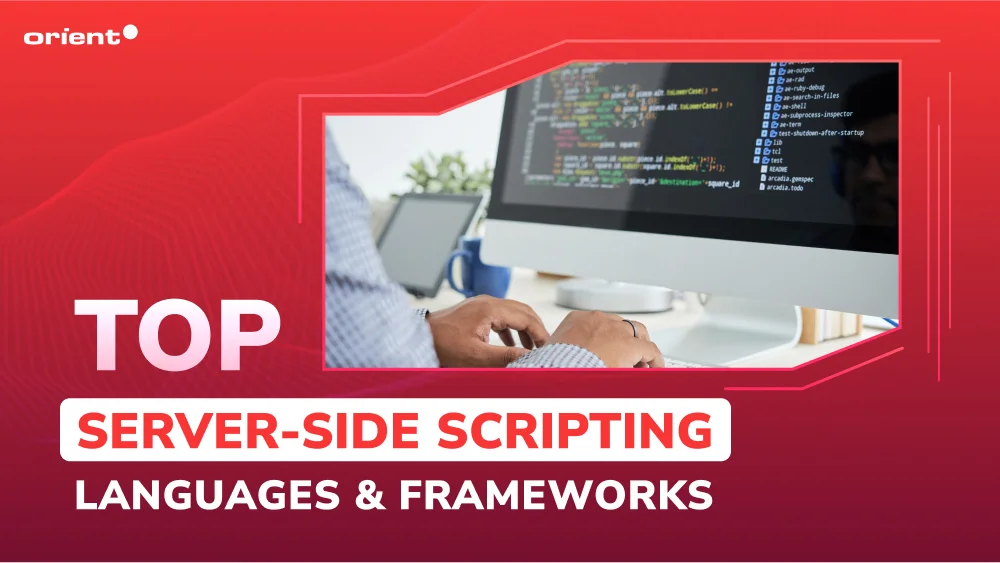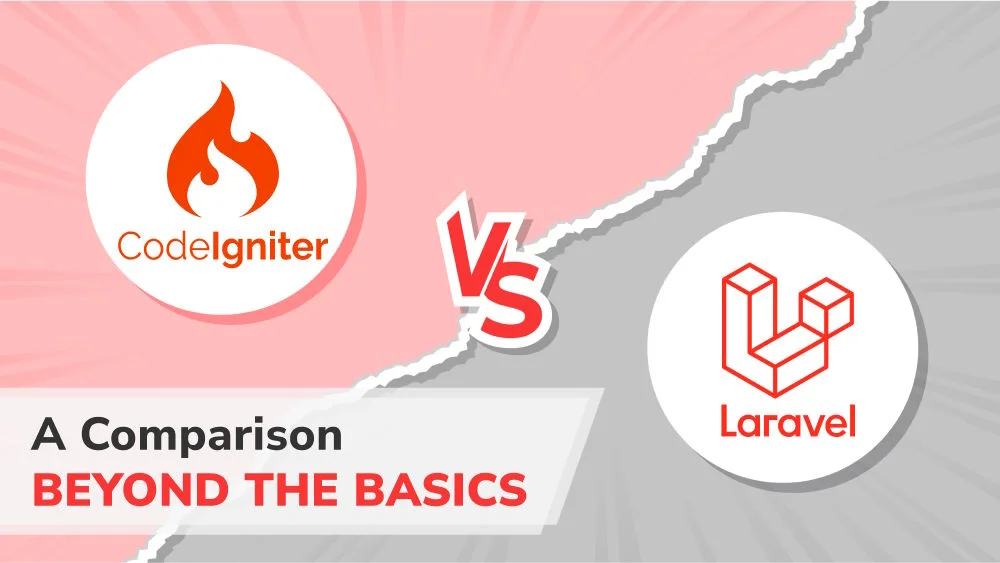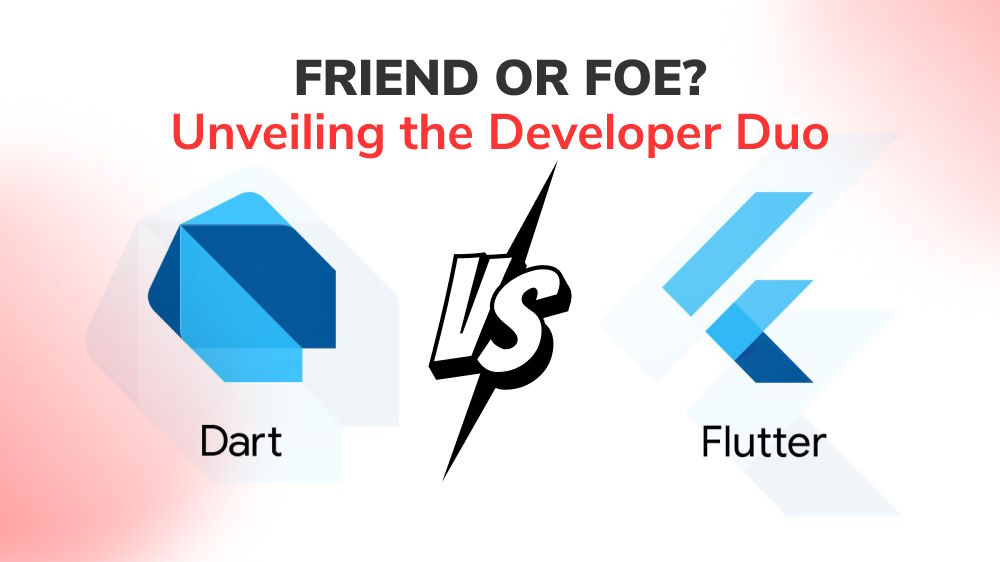Top Server-side Scripting Languages & Frameworks

Content Map
More chaptersThis is a listicle in which we are going to first explain the definition of server-side scripting and then take you through some of the most popular choices of server-side scripting programming languages and frameworks. Read on to choose the right ones for your web developers.
What Is Server-side Scripting?

Client-side and server-side programming are fundamental to both mobile app development and developing web applications. In a brief clarification, client-side programming or front-end development deals with user interface and interactions within the user’s browser, while server-side or backend programming handles everything that happens on the server side - i.e., database operations, data processing, and security. These two work in tandem to form the backbone of any modern web page or application.
Simply put, server-side scripting is a technique commonly employed in web development. It involves writing scripts and executing server-side code on the web server. In this technique, the server processes the user’s request, generates dynamic web pages, and sends the results back to the client. Server-side scripting allows for a more customized and interactive experience for users while also providing better control over data handling and security.
An HTML page serves as the foundation of a website. It provides the structure and layout for showcasing content on the webpage. For your info, HTML (Hypertext Markup Language) is the standard language used for defining elements and their arrangements on a web page. When combined with JS (JavaScript) and CSS (Cascading Style Sheets), it can make web pages interactive, responsive, and visually appealing. However, to add the dynamic resources and functionalities to your webpage you need server-side scripting languages.
Tangible Benefits of Opting for Server-side Scripting Programming Languages

The benefits of server-side programming languages in website development are numerous.
Scalability
Web development can become extremely challenging if you have a huge number of users visiting your site; the more people who visit, the more resources your web application requires. With server-side scripting languages, developers can quickly and efficiently handle complex tasks, such as data processing, database connection, file manipulation, memory storage, etc. Server-side scripting enables you to create scalable web apps capable of handling huge influxes of traffic (Concurrent users and data interactions) without causing website crashes or affecting the overall performance.
Security
A server-side scripting web framework or language offers an extra layer of security. In client-side scripting, it is relatively easy for someone with malicious intent to gain access rights and manipulate the source code since all the scripts are executed on the client’s web browsers. On the other hand, server-side script programming provides security protocols, like input validation and output encoding. Hence, developers hide sensitive information (Like database credentials) to prevent code injection attacks and unauthorized access. Also, server-side scripts are handy for tracking user profiles, removing spam, and even blocking traffic by IP address.
Easy Maintenance
Server-side scripts are easy to maintain as they separate the web page and its content from programming functions. In essence, if developers need to make changes or updates to your web application, they do so on the server’s side. It means you do not need to update the client’s side of your application every time you make a change. Needless to say, it is a time- and effort-saver.
Transaction Management
Some server-side scripting languages can handle transactions because they can execute multiple commands at once. Many programmers use this to create advanced database applications. You should consider whether it would be valuable for your site before you choose a particular language.
Strong Community
Last but not least, most server-side languages have strong communities. Apart from the benefits mentioned above, you should find plenty of tutorials and documentation when choosing a language. You will also be able to find questions answered by other users in online forums. This is especially true for the top scripting languages listed below because they are popular.
Top 7 Server-side Scripting Languages & Frameworks for Web Development
Server-side scripting languages and frameworks are essential for developing dynamic and interactive web applications with complex functionalities. Let’s take a look at the top 7 choices of popular programming languages and frameworks for server-side scripting trusted by developers worldwide.
PHP

It is a prevalent server-side scripting language that is in use today. Danish-Canadian programmer Rasmus Lerdorf developed it in 1995. Since then, PHP has steadily gained popularity as a platform for building database-driven websites and dynamic applications.
PHP interpreters are found on more than 20 million websites. This is the affirmation of PHP’s widespread adoption in the current web development community. One key strength of this programming language lies in its flexibility - which makes it easier to integrate with many different databases, including SQL and MySQL, while remaining agnostic to any particular database system.
Being open-source software, PHP grants developers the capabilities of freely accessing, modifying, and distributing the code in order to foster a collaborative environment for continuous improvement eventually. Most web servers use PHP to implement the Basic and Configuration Directives (known as Apache mod_php) to facilitate the execution of PHP scripts within the server environment.
Noteworthy high-profile users of PHP include tech giants like Facebook and Wikipedia, underscoring its capability to power large-scale, dynamic web applications effectively. Due to its popularity and versatility, there is a consistent demand for PHP programmers.
Some of the PHP frameworks for web app development you can consider are:
- Laravel: A web framework with expressive, elegant syntax. Laravel aims to simplify the whole process from a suffering one to a pleasing one without sacrificing application functionality.
- Symfony: An available set of reusable PHP components and a PHP framework used for web projects.
- CodeIgniter: A powerful PHP framework with a tiny footprint - which is built for coders who need a simple and elegant toolkit to craft full-featured web applications.
- Etc.
Node.js

It is no surprising when Node.js is on this list. Well known for its efficiency in handling web applications, Node.js is a high performant and scalable server-side runtime environment. Node.js empowers software professionals to develop dynamic websites and services not only for browsers and mobile devices but also for emerging platforms (E.g., Smartwatches).
Node.js serves as a runtime environment executing scripts written in various programming languages, most notably JavaScript and CoffeeScript. This means it can run any type of software with the help of external libraries or frameworks. Those who want to learn Node.js should consider taking advantage of its extensive library of modules, including Connect and Express.
The downside of Node.js is that its ecosystem is mainly composed of custom modules, meaning programmers can be restricted by pre-built modules when working on certain projects. Additionally, some developers may find Node.js syntax too rigid or confusing when dealing with large projects.
Some suggestions for Node.js frameworks:
- Express: A minimal and flexible Node.js development framework that comes with a robust set of features for web and mobile applications.
- Koa: Known as the successor to Express, it promotes the use of async functions in favor of callbacks.
- Meteor: An open-source full-stack platform for building web and mobile apps in pure JavaScript.
- Etc.
Python

It is a general-purpose language, but it is often used as a server-side scripting language. Why? Python is quick and easy to code in, easily readable, has a vast library of functions that you can use for free, and lots of web frameworks designed for Python that speed up development tremendously. In addition, it is widely considered to be an easy programming language to learn and read due to its clear syntax and use of indentation to delimit blocks.
In the field of web development, Python shines as a preferred language. Python’s cross-platform compatibility ensures seamless operation across various operating systems. For that, it becomes a versatile option for server-side scripting in diverse environments. While Python is well-suited for web applications, its utility transcends web development to encompass data analysis, machine learning, automation, and scientific computing, showcasing its broad applicability in modern technology stacks.
The Python programming language has experienced a significant upsurge in adoption within the web development community in recent years. Prominent websites, namely Pinterest and Instagram (the latter of which Facebook bought for billions of dollars), serve as testaments to Python’s efficacy in powering high-traffic web platforms.
Like other programming languages, Python is renowned for its robust frameworks, typically:
- Django: A high-level Python web framework that encourages rapid development and clean, pragmatic design. This one is suited for complex and sophisticated web applications.
- Flask: A micro web framework based on Werkzeug and Jinja2. Flask is designed to be easy to get started with while also being highly extensible when it comes to complex and sophisticated web applications.
- FastAPI: A modern, high-performance web framework for building APIs with Python 3.6+ based on standard Python-type hints. FastAPI provides powerful and easy-to-use features that allow developers to create fast, scalable, and secure APIs quickly.
- Etc.
Java

This is one of the server-side scripting languages and a general-purpose programming language. Java is concurrent, class-based, object-oriented, and specifically designed to have as few implementation dependencies as possible. In addition, it is intended to let application developers “write once, run anywhere” (WORA), meaning that codes that run on one platform do not need to be recompiled to run on others.
Java is very stable, and it can do real-time sharing with other computers on a network (known as having ‘multithreading’). Java can also handle massive amounts of data which makes it ideal for managing large databases. The programming code for Java often uses English-like keywords which are easier to remember.
Java is a potent language, but it can sometimes be too complex. Also, if the programmer makes mistakes when writing the code, the program could crash in some situations. Large organizations like IBM and Sun Microsystems help maintain this language with software updates.
Java has many frameworks to choose from, such as:
Spring Boot: An open-source Java-based framework used to quickly create stand-alone and production-grade Spring applications. It is opinionated so as to give developers a huge set of defaults with sensible configurations. Apache Struts: A free, open-source framework for building Java EE web applications that use Model–View–Controller (MVC) architecture. It has a robust set of tags for manipulating data, managing forms, and more. Grails: An open-source web application framework written in the Groovy language. Grails is designed to be a high-productivity framework by adhering to the “coding by convention” paradigm - to provide a stand-alone development environment and hide much of the configuration detail from the programmers. Etc.
Golang

Golang is a fresh programming language that Google developed. It is meant for lightweight web services that are designed to run on mobile devices easily. This makes it very unique compared with other server-side scripting languages - many of which were designed to be completed on large-scale projects, but GoLang was created in the opposite direction.
The unique thing about GoLang is that you can deploy it one way to have a light web service, but then, when the need arises, you can reuse your code in any other way. The language was created with portability in mind - you don’t always need to make everything work on everything else.
For instance, if you want to write in C# for your Android app, you can deploy it in a lightweight way on the server in Golang. But when you need to make something more complex or work with Java language, then you can take that same code and use it again according to what you are implementing. Overall, the goal is about how to make things more productive. Some top frameworks for Go include:
Beego: A full-fledged MVC framework designed to be easy to use and highly scalable. Beego comes with built-in tools for developing RESTful APIs out of the box. Revel: Another high-productivity, full-stack web framework for Golang that follows the Model-View-Controller (MVC) architectural pattern and provides a rapid development experience. Gin: A web framework for Go that concentrates on high performance and minimal memory usage. It features a martini-like API that performs much better than other Go web frameworks. Etc.
C Sharp (C#)

C# is a general-purpose, object-oriented programming language brought to fruition by Microsoft. C Sharp is trusted for building applications on the .NET framework, including web apps using ASP.NET. Despite being primarily utilized for Windows platforms, C# has been ported to other platforms as well.
C# offers strong typing, scalability, and performance optimizations. Even though C# is purposely created to be simple and easy to learn and use, it is still powerful enough for complex development projects. Therefore, it becomes the best programming language for developing server-side logic for web applications.
Also, C# has a vibrant and supportive community, so you will find it easy to seek help when you are stuck. Although this may not matter to many businesses because they have an IT department, small companies or people working solo may appreciate this aspect of C#.
Some popular frameworks for C# include:
- ASP.NET Core: It is a cross-platform, high-performance framework for building modern, cloud-based, and internet-connected apps using C#. It is a redesign of the original ASP.NET framework and offers improved modularity, performance, and flexibility. ASP.NET Core supports MVC architecture, Web API development, and SignalR for real-time web functionality.
- Entity Framework: An object-relational mapping (ORM*) framework for ADO.NET that simplifies the process of working with relational databases in web apps.
- Nancy: A lightweight, open-source, and highly testable web framework for building HTTP-based services in .NET. It is designed to be a low-ceremony alternative to ASP.NET MVC for developing RESTful APIs.
- Etc.
Ruby

This is one of the server-side scripting languages with a focus on simplicity and productivity. Ruby, an object-oriented language, can be used by new programmers or experienced developers looking to write code more efficiently. With a syntax similar to other dynamic languages like Python and Perl, Ruby has elements of functional programming as well.
The goal of Ruby is to make programming fun again for software developers who have become disillusioned with the more popular languages of the day. Ruby is designed to help programmers efficiently address common programming tasks, including memory management and concurrency, which are problematic in other languages. In addition to its use as a general-purpose programming language, Ruby is used for server-side scripting in web applications.
Ruby also has many of the same features that developers enjoy in Python, Perl, and PHP. However, it also has unique benefits that make it worth learning, even if you use another scripting language regularly. For example, Ruby has excellent error-handling capabilities and some powerful libraries that make it possible to handle complex programming tasks.
Some notable frameworks for Ruby include:
- Ruby on Rails (RoR): For your info, Ruby on Rails is a server-side development framework written in Ruby under the MIT License. RoR is an open-source framework that provides a default structure for databases, web services, and web pages. It facilitates the utilization of web standards (E.g., JSON or XML for data transfer and HTML, CSS, and JavaScript for user interfacing).
- Sinatra: A DSL (domain-specific language) for quickly creating web applications in Ruby with minimal effort. Sinatra is ideal for small projects or prototypes since it is lightweight and easy to learn.
- Padrino: An advanced web framework based on Sinatra that offers a structured environment for developing web applications in Ruby, with support for more complex architectures and modular design patterns.
- Etc.
In Summary
Server-side scripts are a powerful way to add functionality and interactivity to your website. They’re also often the most complex aspect of programming, so you must choose one with ease of use in mind.
However, as we mentioned above, there are currently so many programming languages, but not all of them will work for your company. We expect you to choose the right one for your projects or business needs with the seven popular server-side scripting languages we have compiled.
More than that, if you require advice or guidance from experts or search for a dedicated team of top-rated developers whose expertise and experience align with your project requirements or our custom software development services, please feel free to get in touch with us at Orient Software.
If you would like to know more about us or our work, refer to “Why Partner with Us?” or our “Case Studies”. We are always ready to help you out. Hope to work with you soon.







